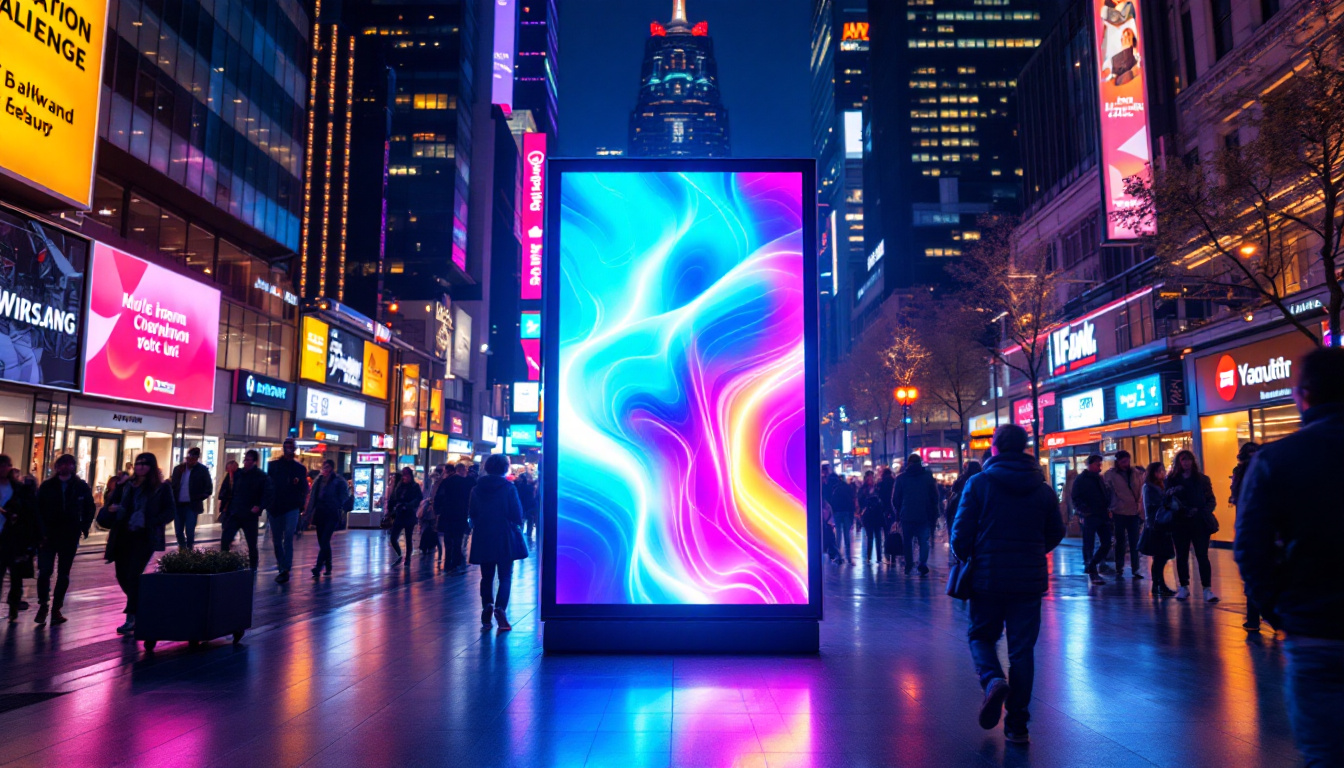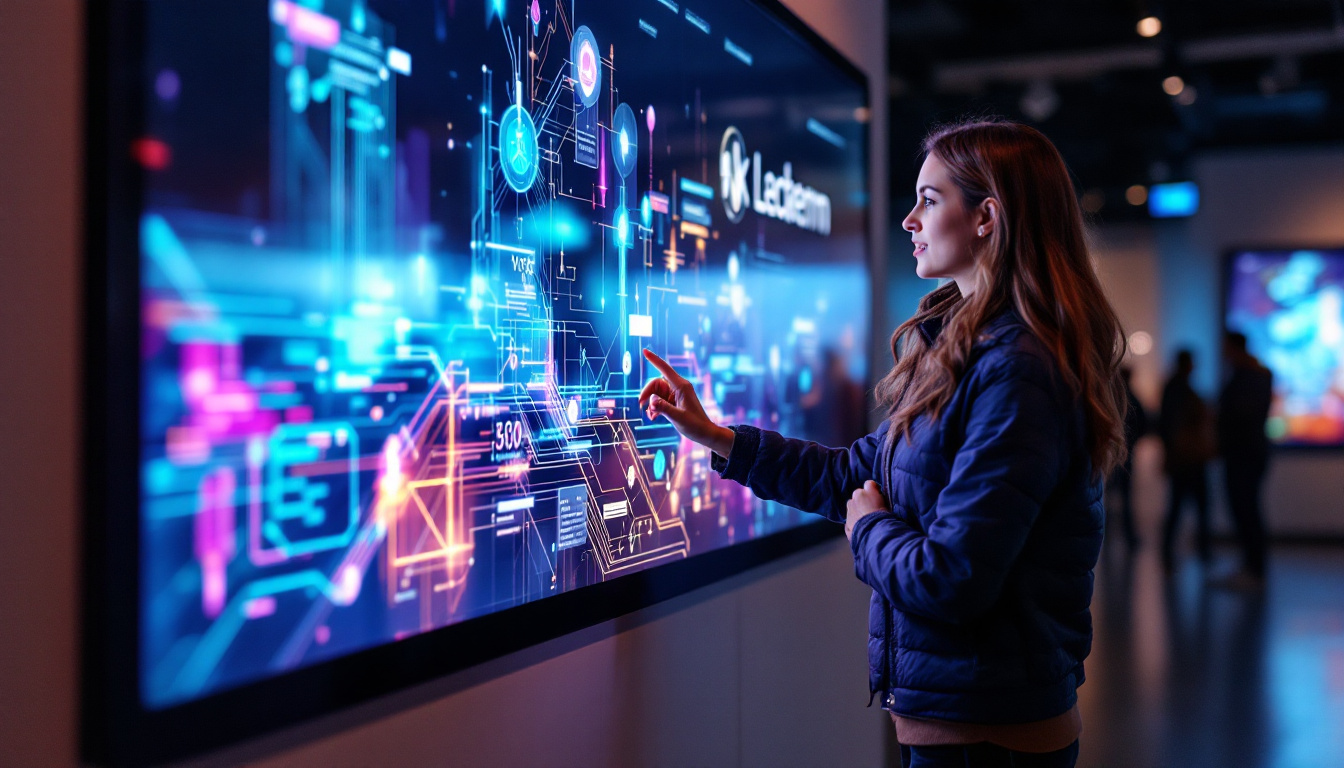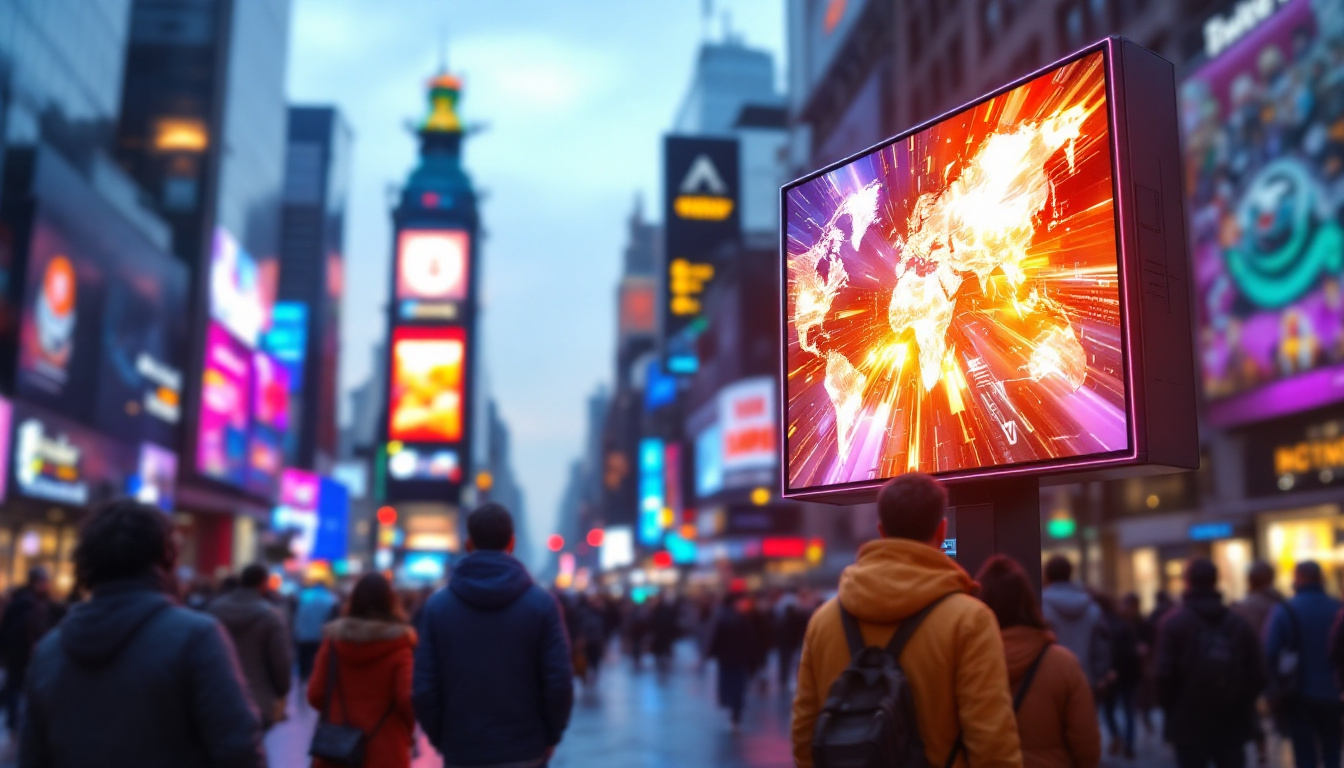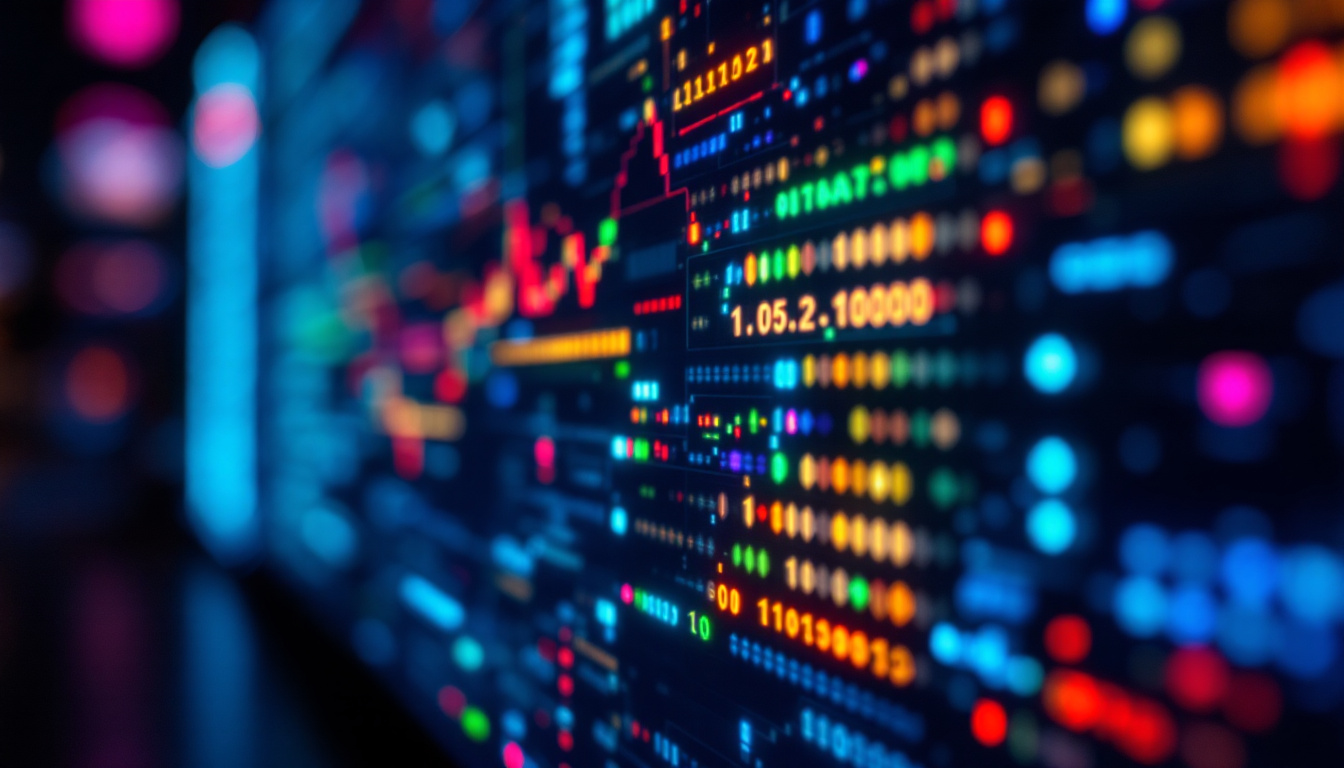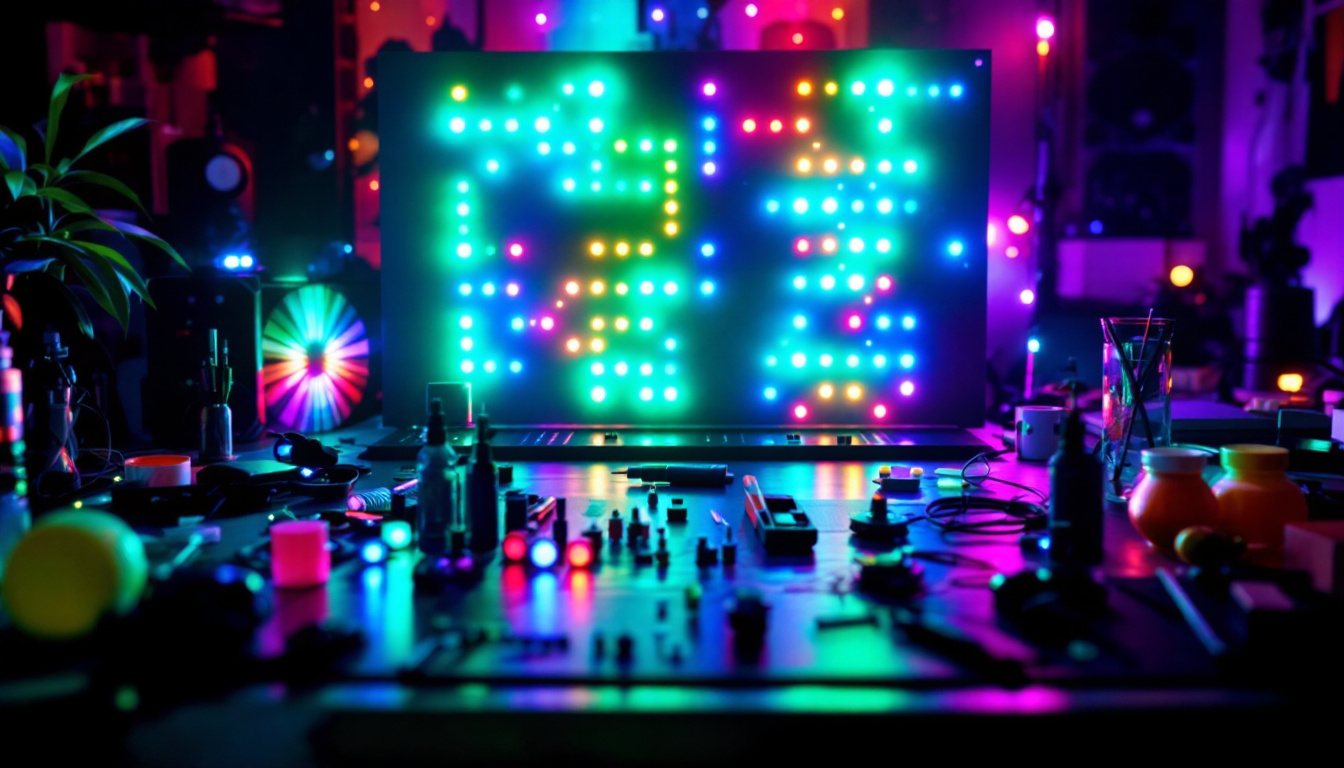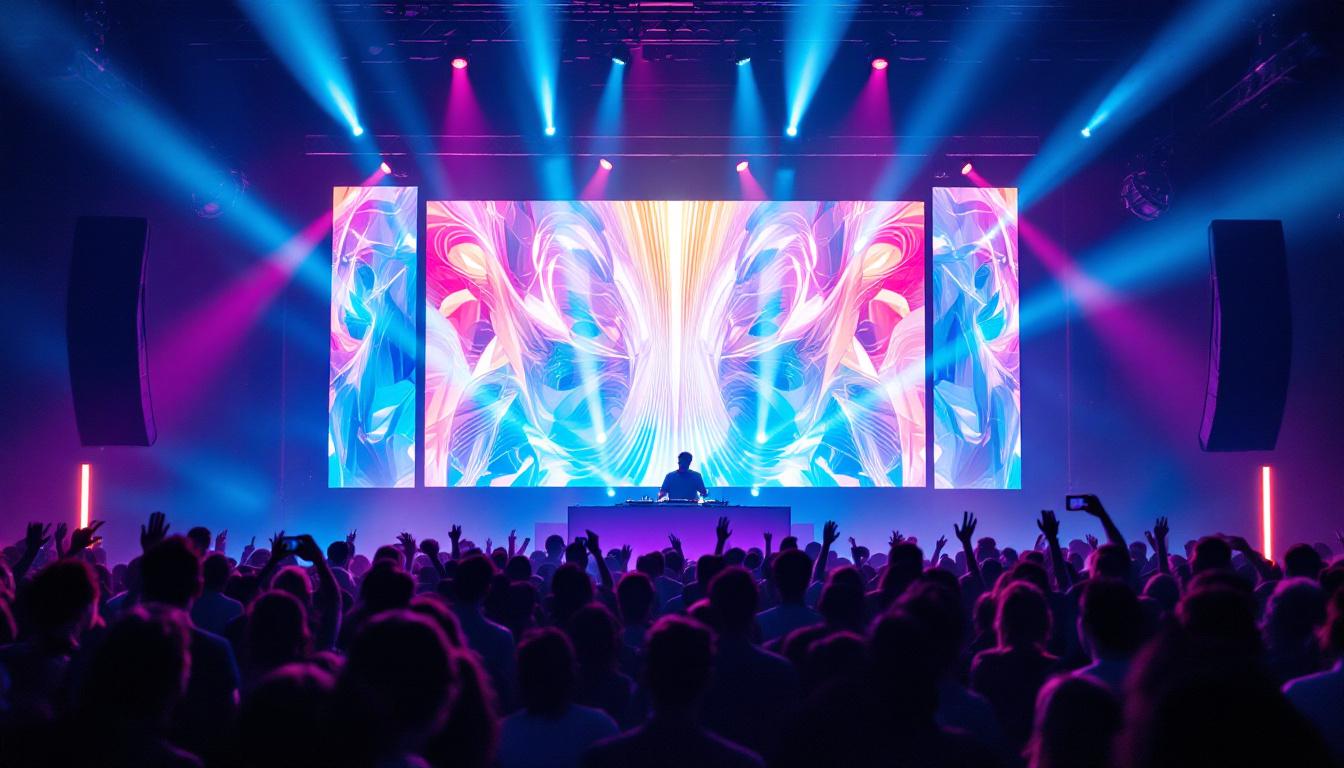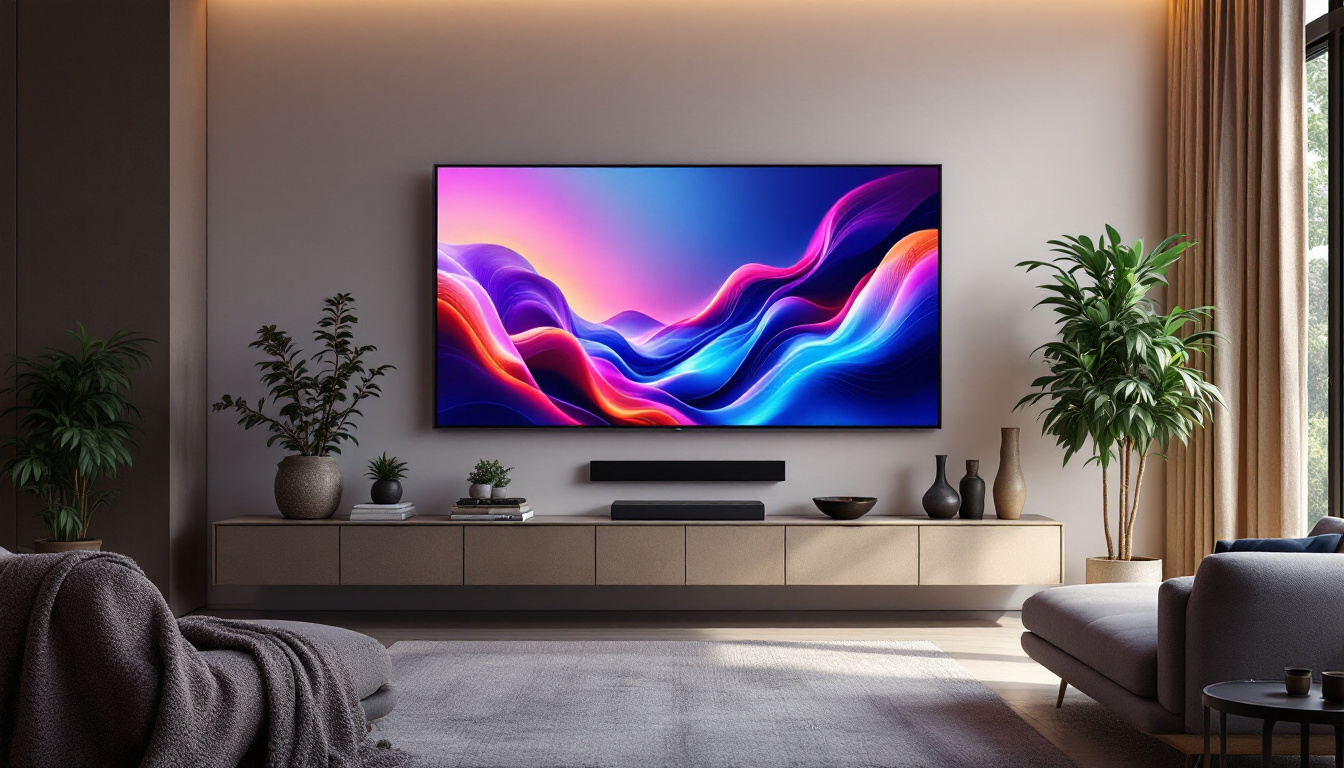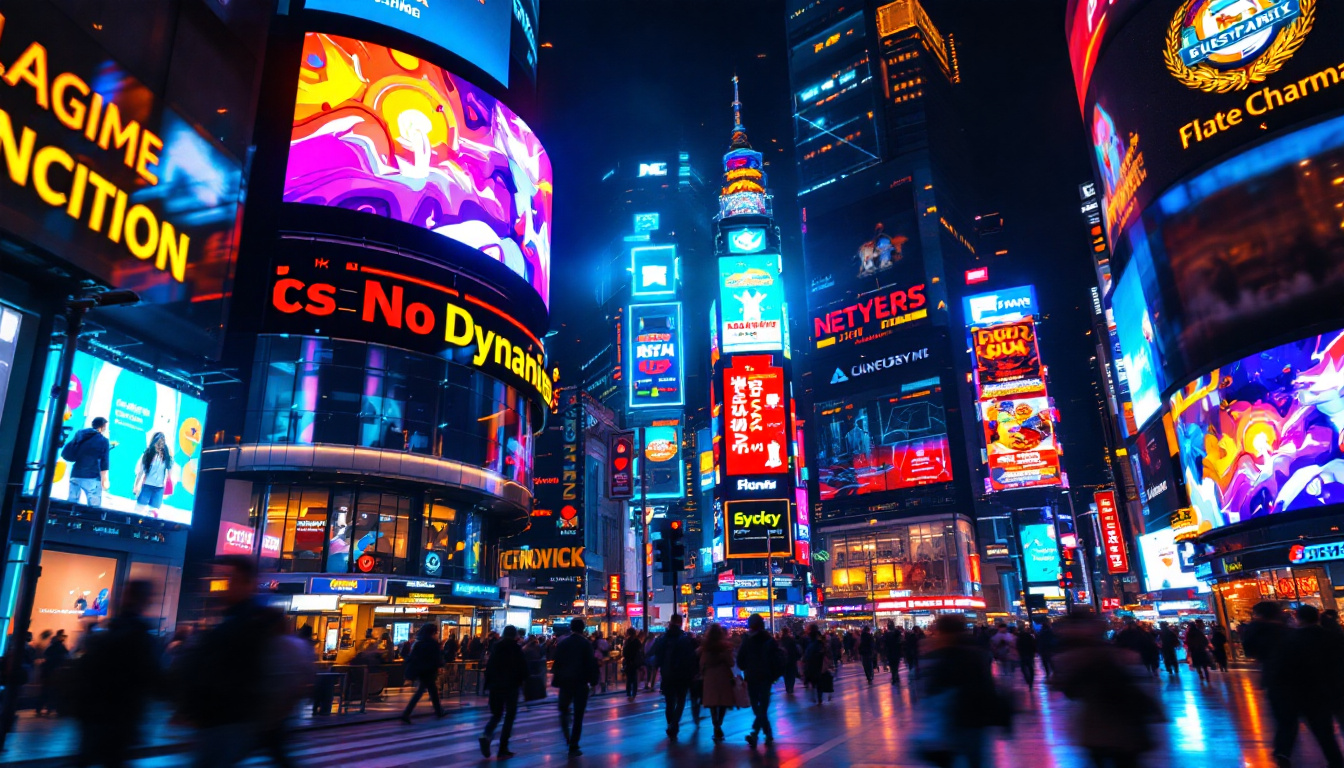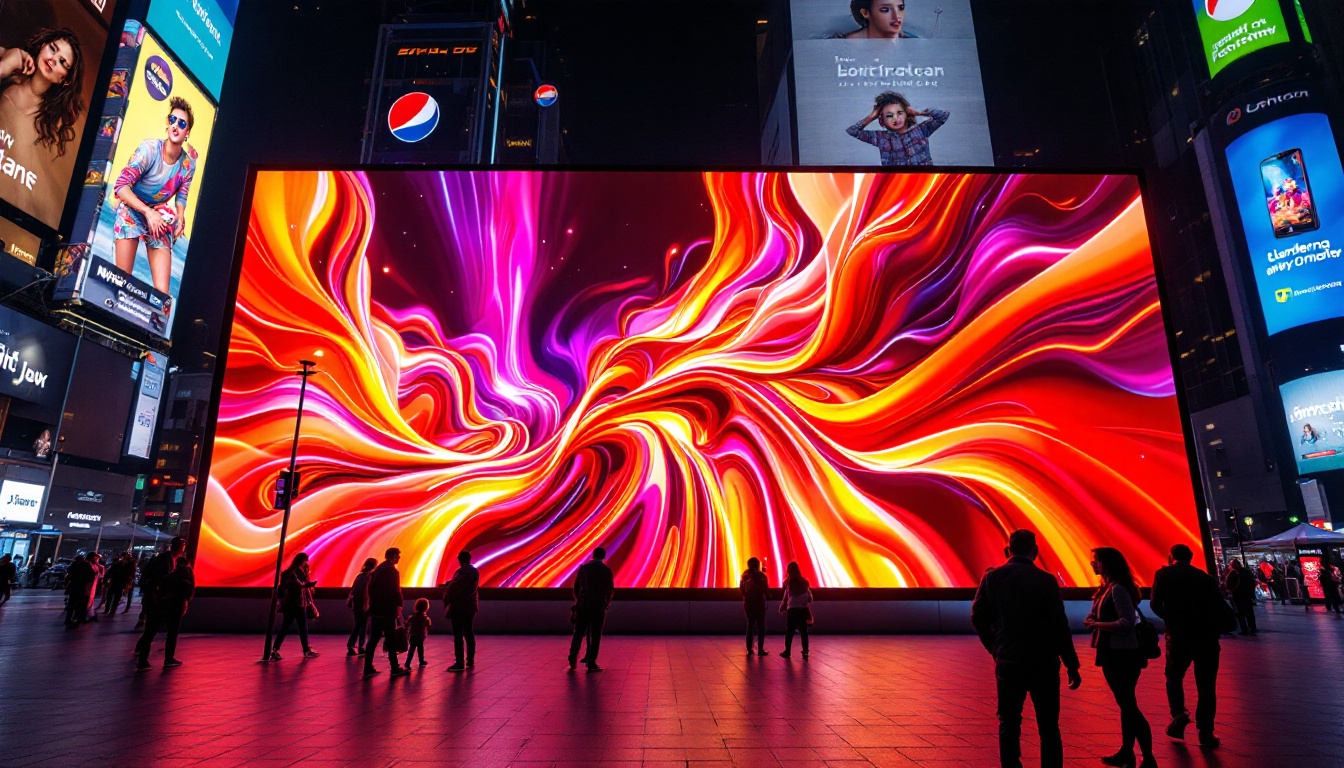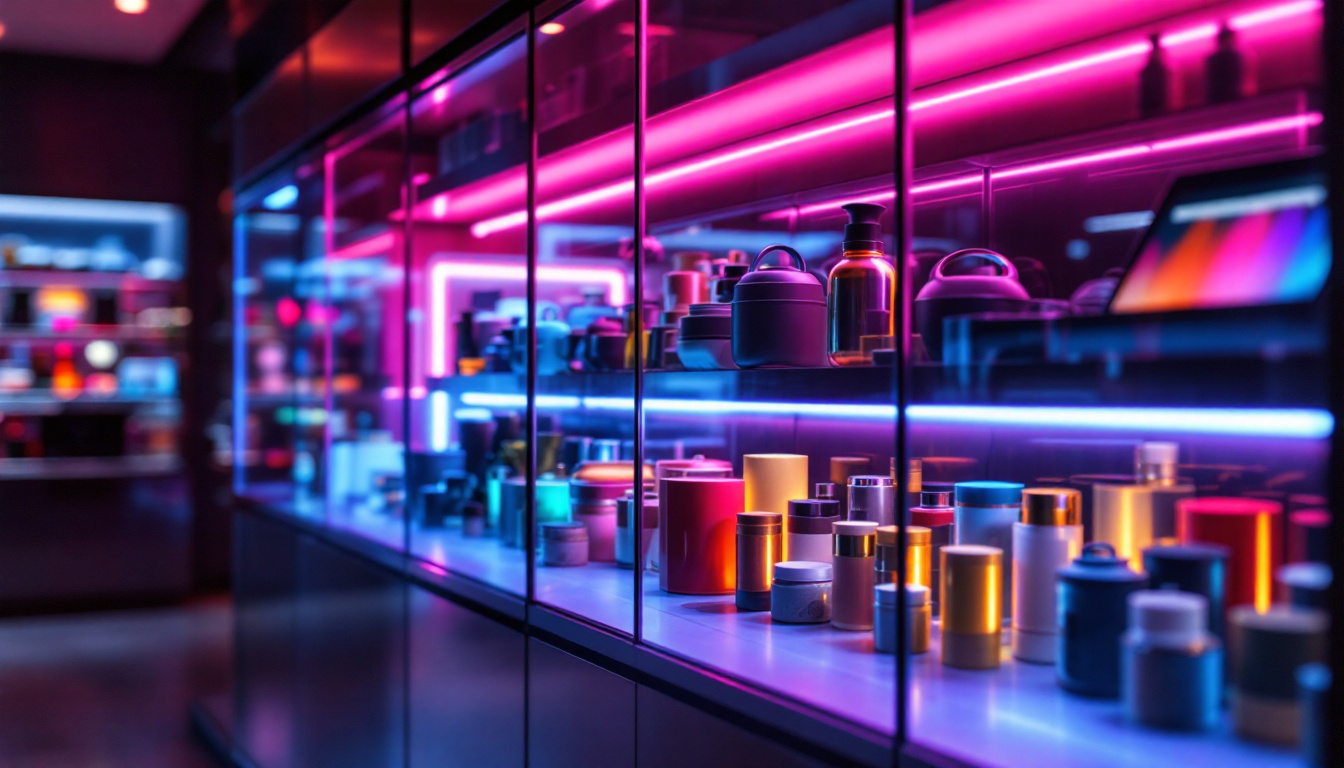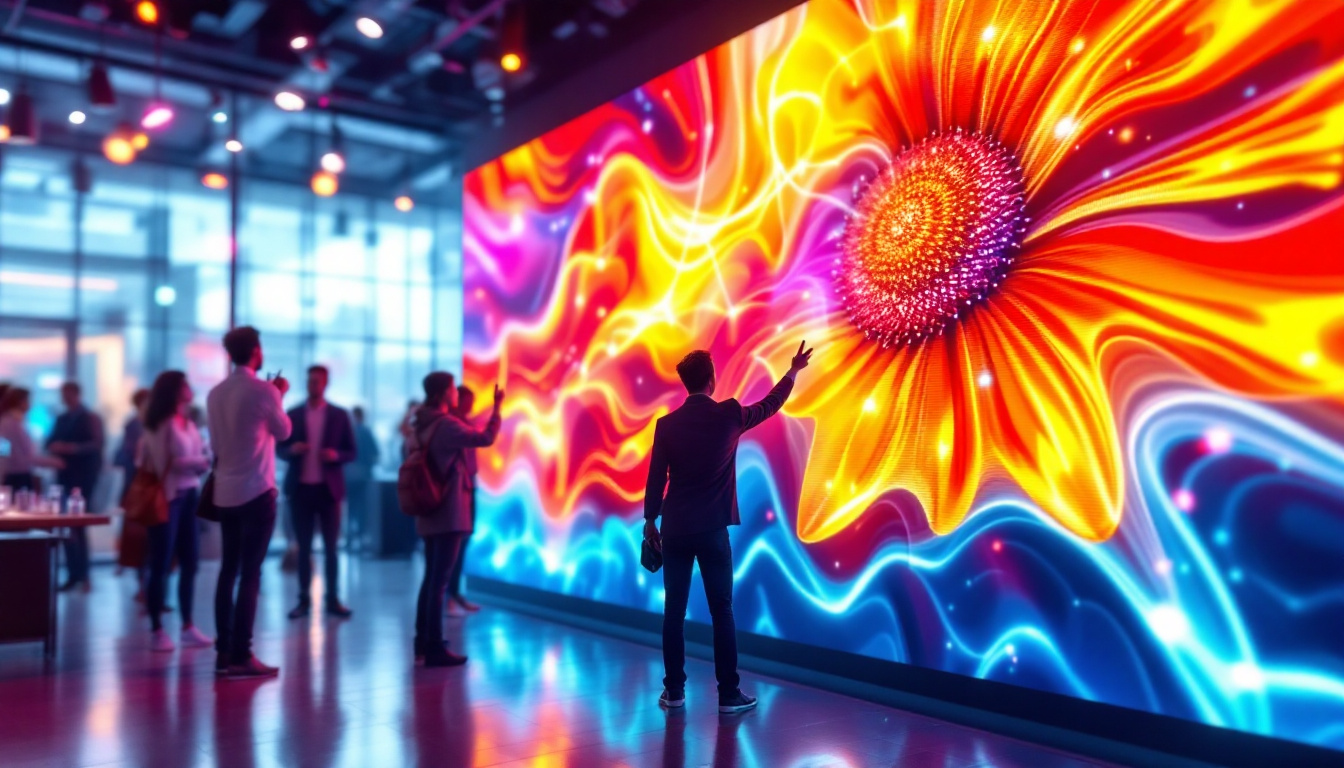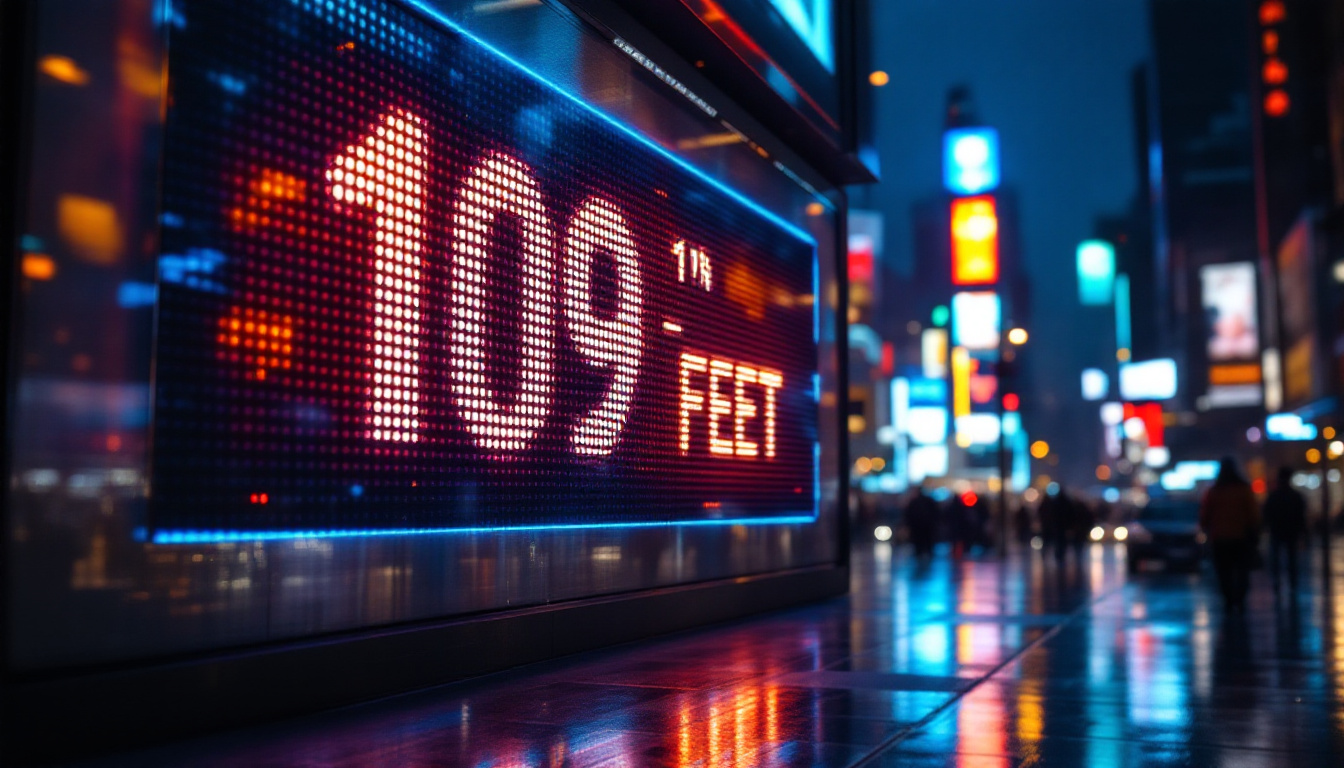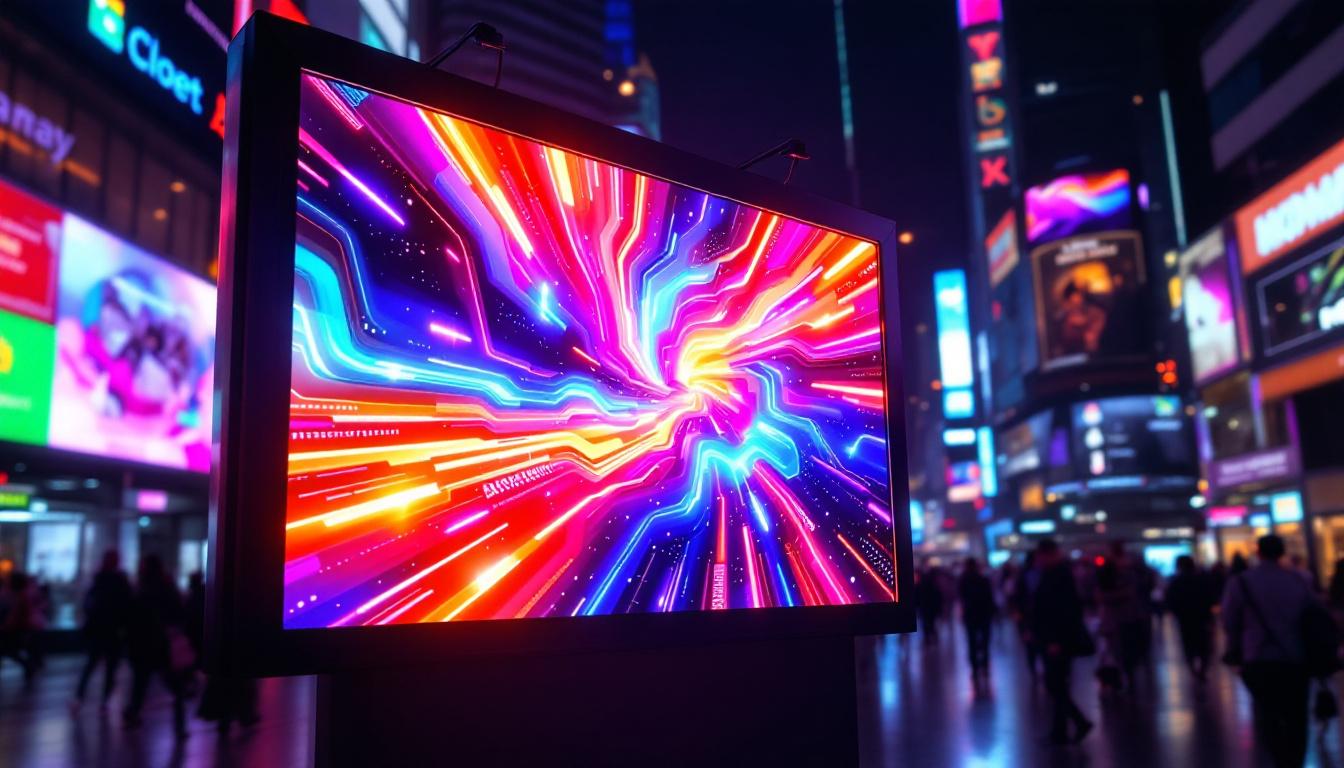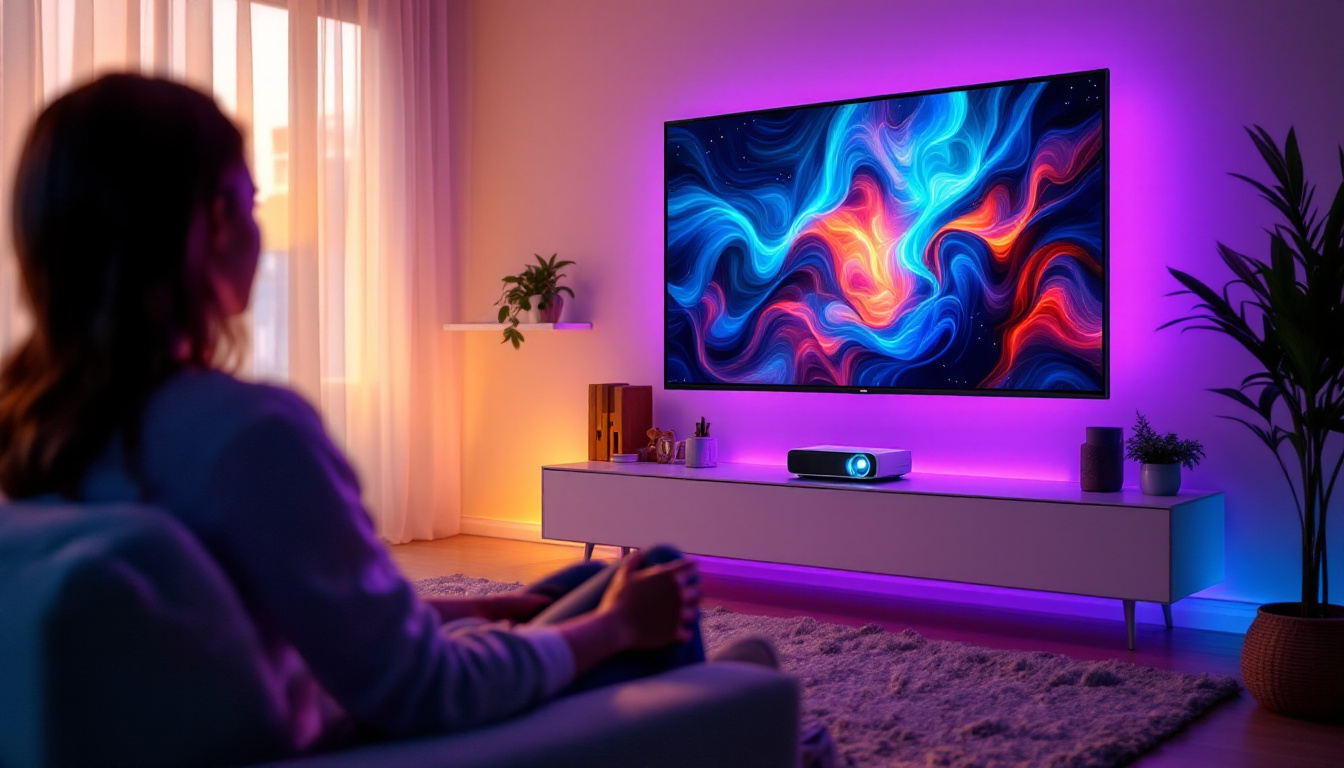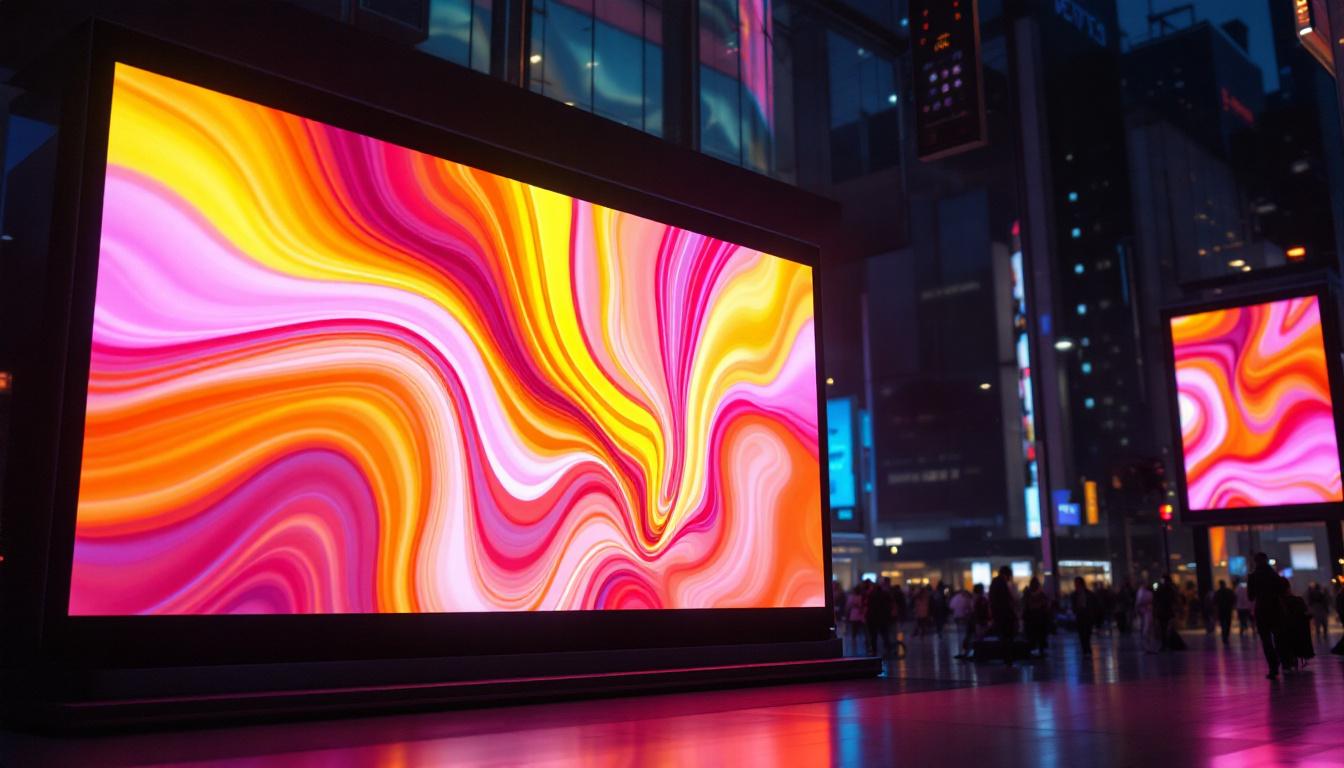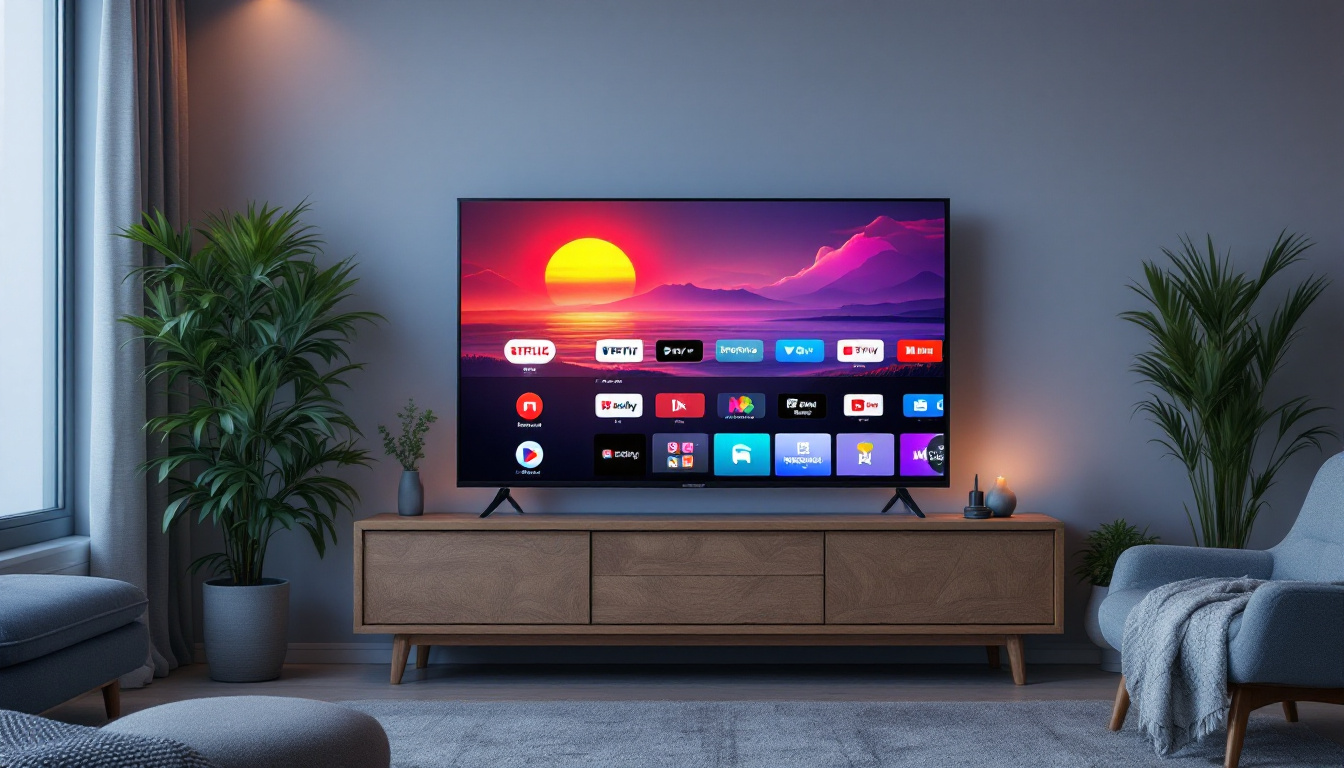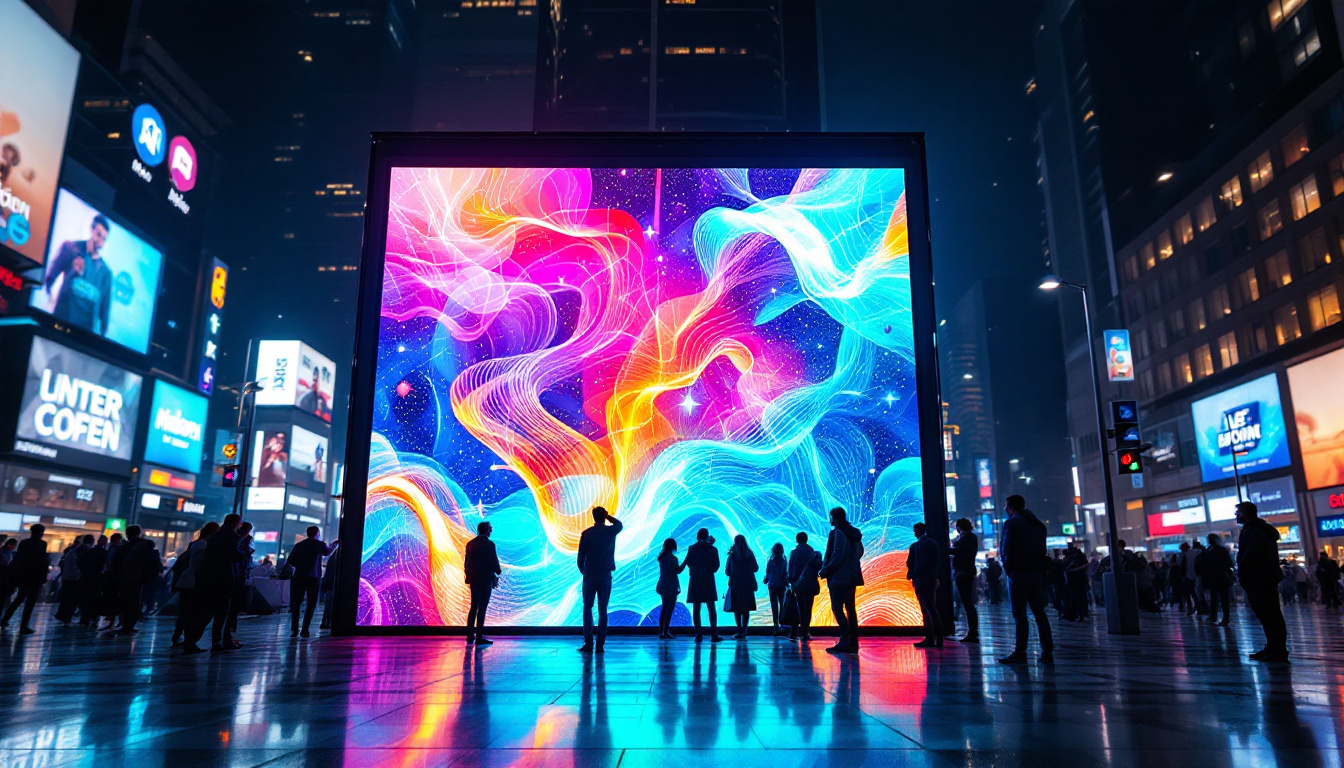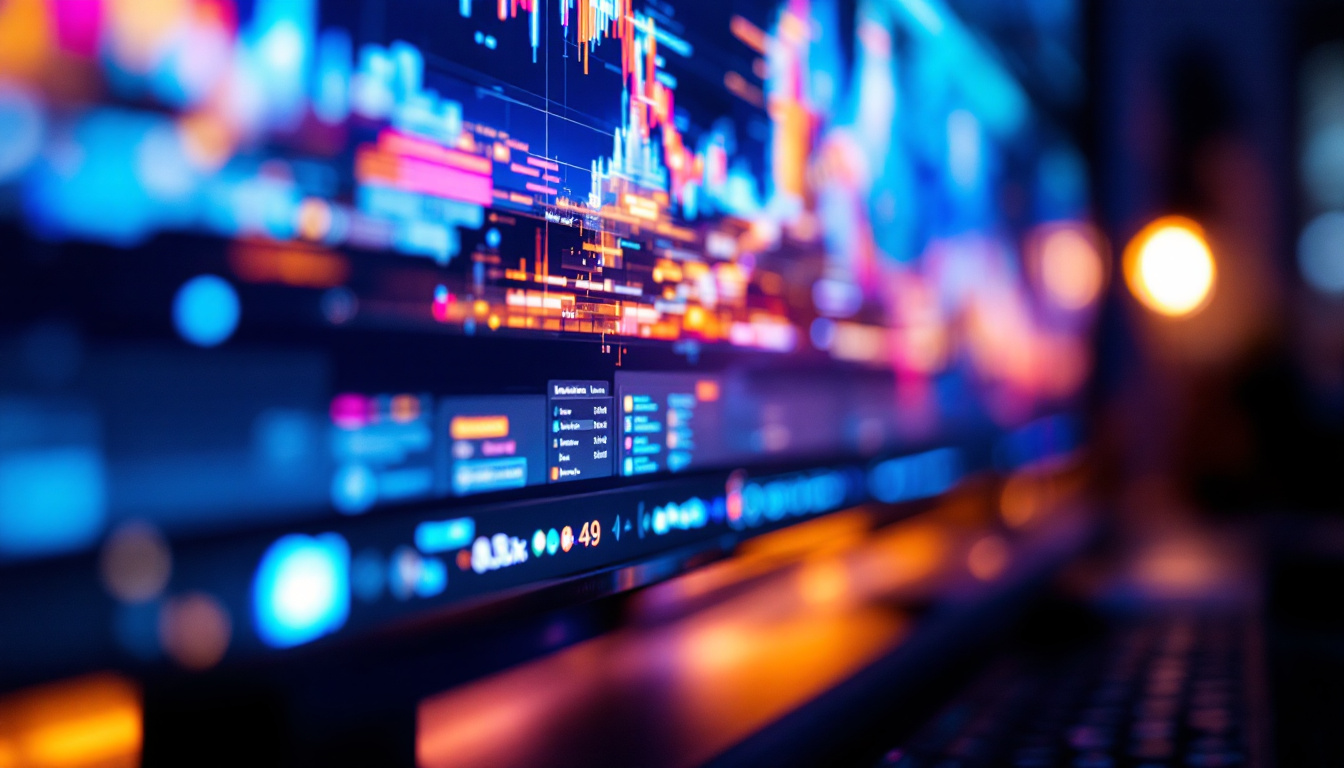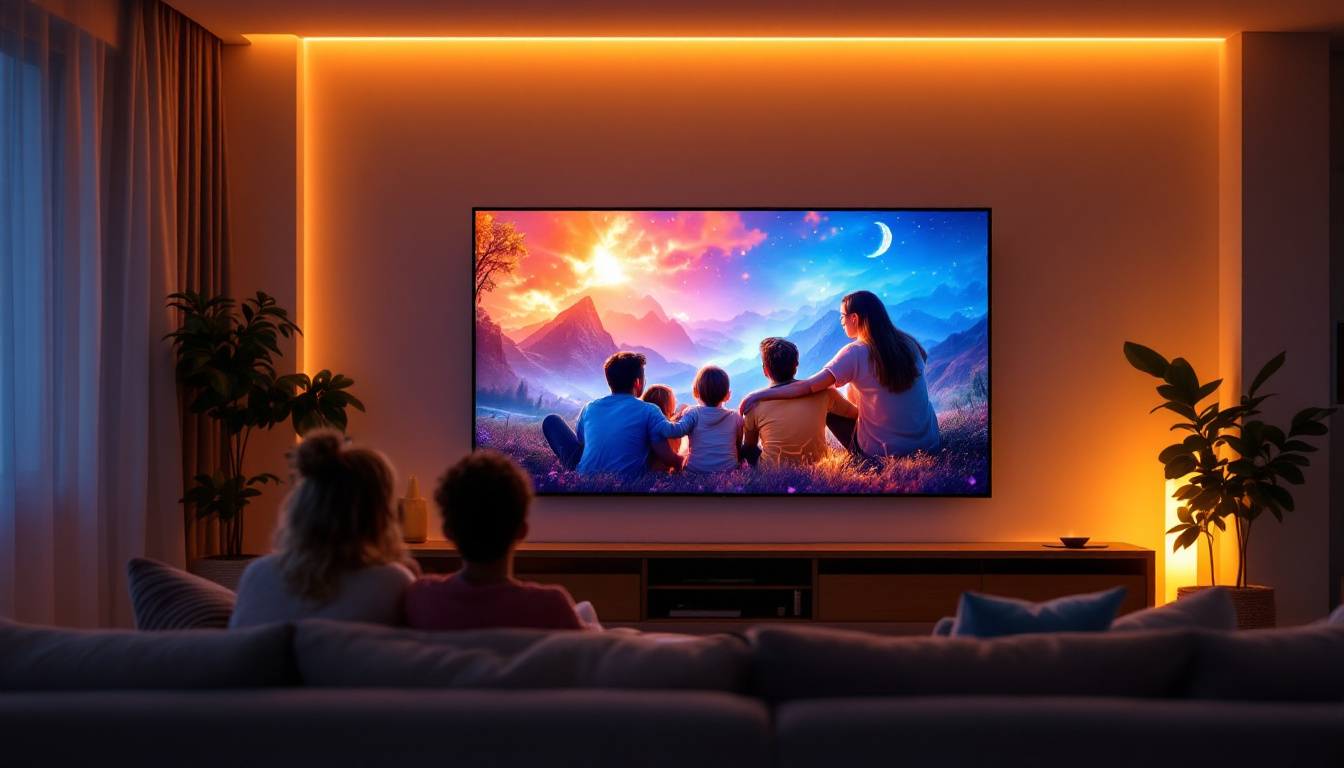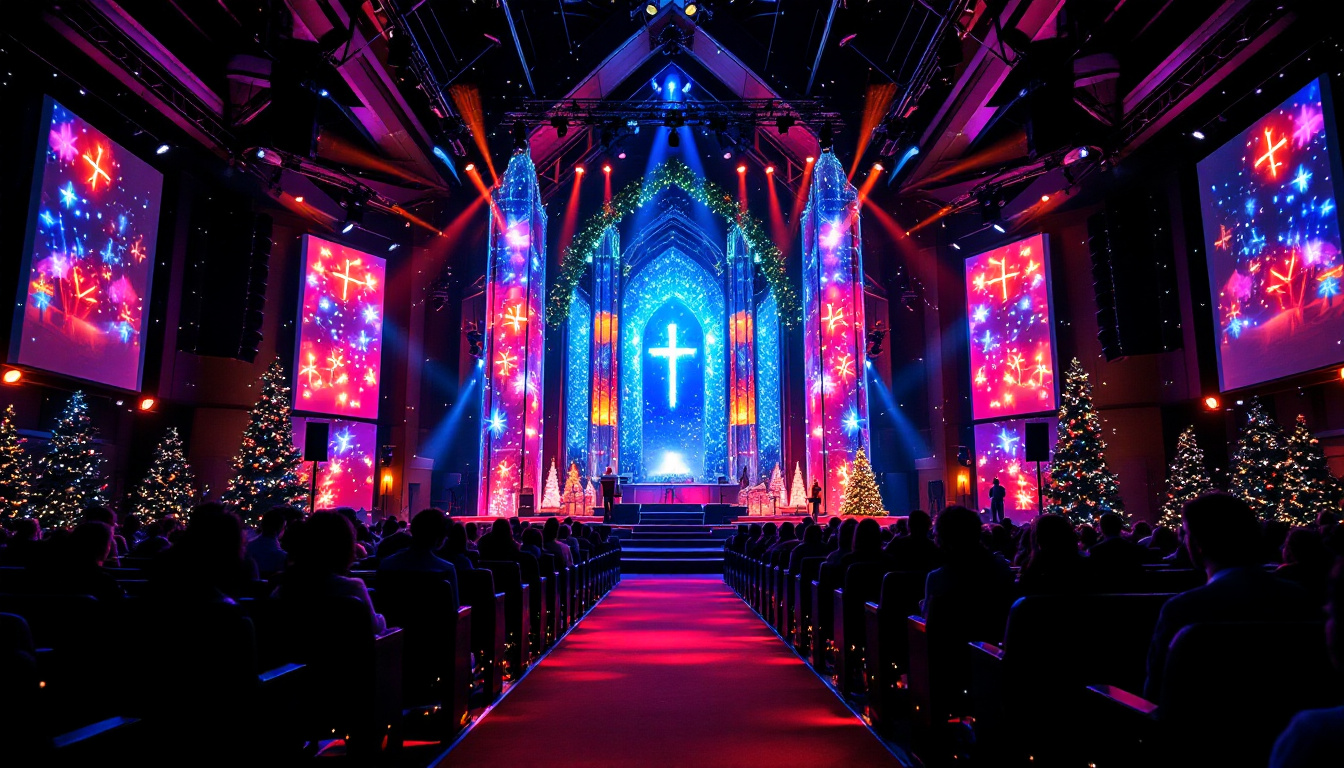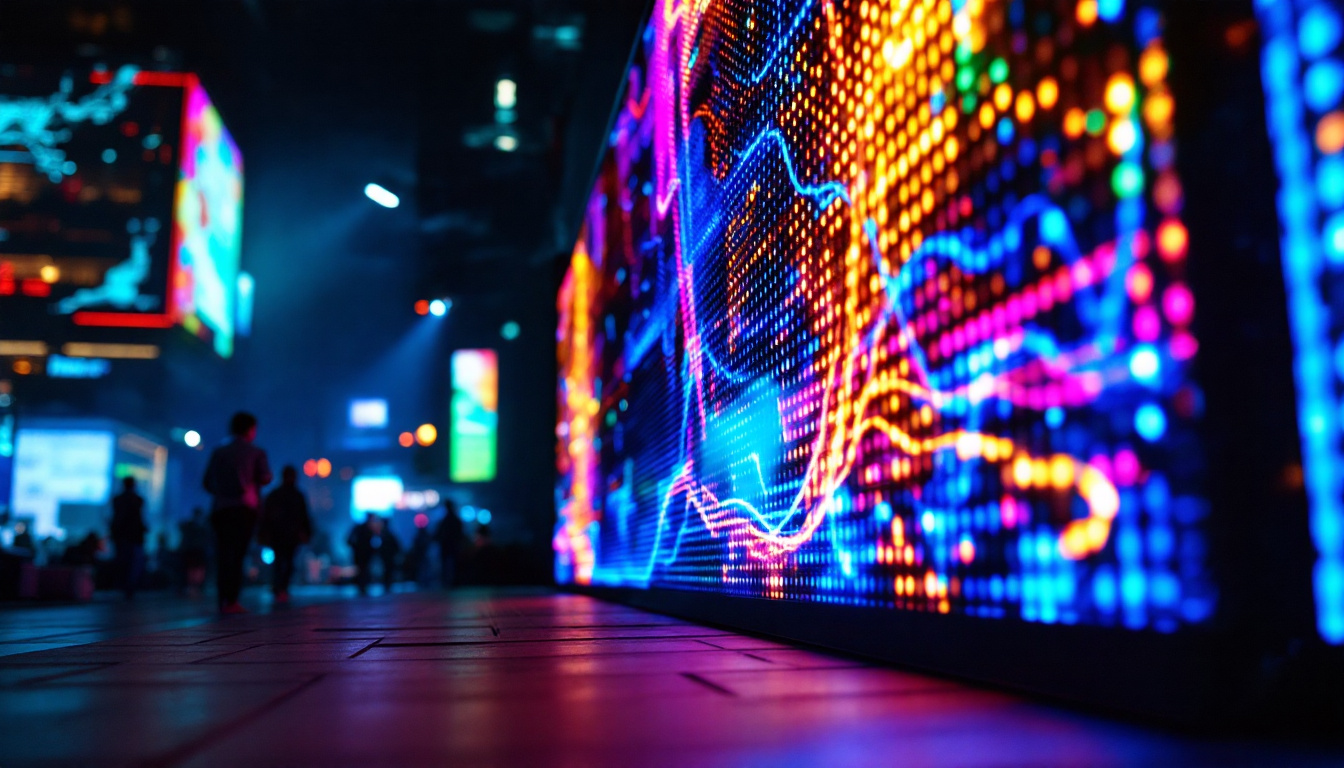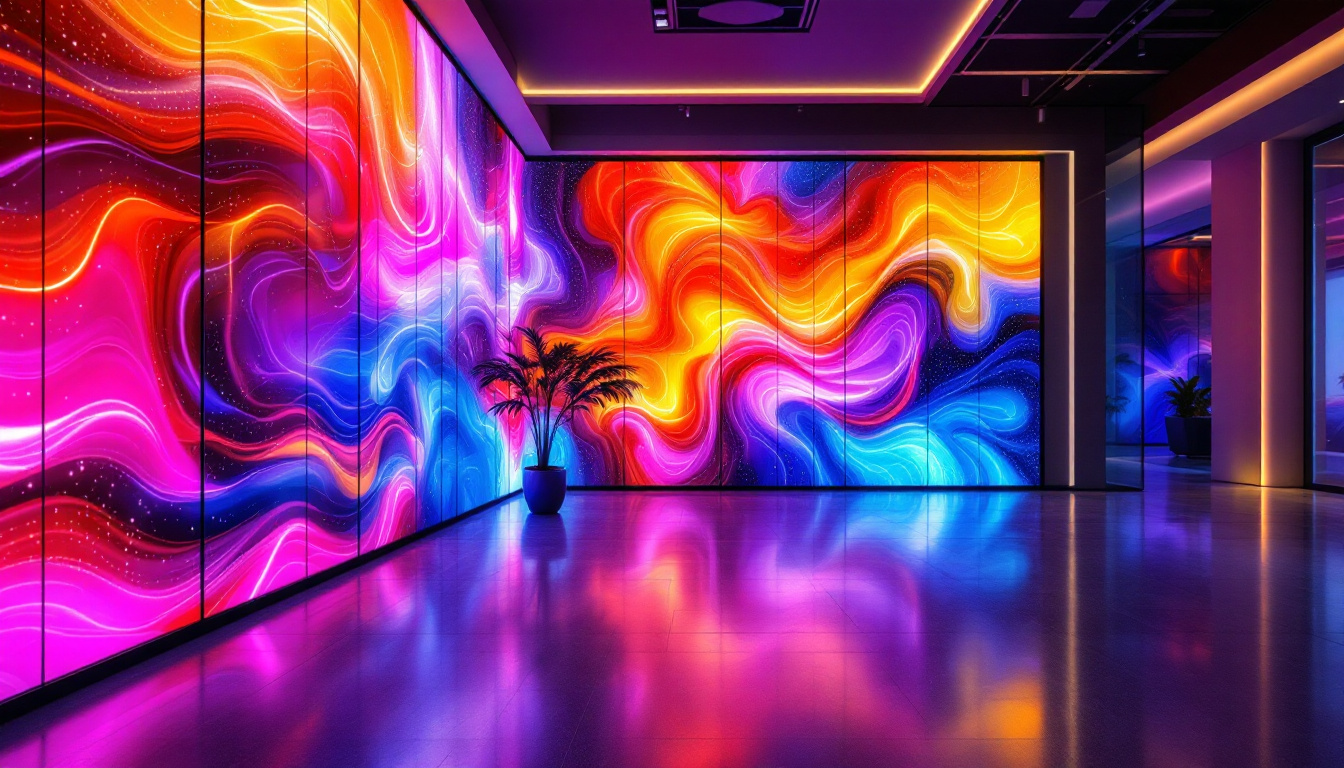In an era where visual communication is paramount, digital poster displays have emerged as a powerful tool for businesses and organizations. These displays, often utilizing LED technology, offer vibrant visuals and dynamic content that can capture the attention of passersby. This article delves into the intricacies of digital poster displays, focusing particularly on LED technology, its benefits, applications, and future trends.
Understanding LED Technology
Light Emitting Diode (LED) technology has revolutionized the way displays are designed and utilized. Unlike traditional display methods, LEDs offer numerous advantages that make them ideal for digital poster displays. Their energy efficiency and longevity also contribute to reduced operational costs, making them a popular choice for businesses looking to enhance their visual communication without incurring high energy bills.
What is LED?
LEDs are semiconductor devices that emit light when an electric current passes through them. This technology allows for brighter displays with lower energy consumption compared to incandescent or fluorescent lights. The compact size of LEDs also enables more versatile design options, making them suitable for various applications. Furthermore, the durability of LEDs means they are less prone to breakage and can withstand harsher environmental conditions, which is particularly beneficial for outdoor installations.
How LED Displays Work
LED displays are composed of numerous tiny LED lights arranged in a grid. Each pixel on the display is made up of red, green, and blue LEDs, which combine to create a full spectrum of colors. By adjusting the intensity of each color, these displays can produce vivid images and videos, making them ideal for advertising and informational purposes. The rapid response time of LEDs also allows for dynamic content changes, enabling advertisers to capture attention with eye-catching animations and real-time updates.
Types of LED Displays
There are several types of LED displays, each suited for different applications. The most common types include:
- Direct View LED: These displays are made up of individual LED modules that can be assembled into larger screens. They are often used for outdoor advertising due to their high brightness and visibility.
- LED Video Walls: Comprising multiple LED panels, these walls can create large, immersive displays suitable for events, concerts, and exhibitions. Their modular nature allows for flexibility in size and shape, catering to various venue requirements.
- Transparent LED Displays: This innovative technology allows for displays that can be seen through, making them ideal for retail environments where visibility is crucial. They can be integrated into windows and glass surfaces, providing an engaging way to showcase products while maintaining an open and inviting atmosphere.
Additionally, there are also OLED (Organic LED) displays, which utilize organic compounds to emit light and offer even greater color accuracy and contrast ratios. These displays are particularly popular in high-end televisions and mobile devices due to their ability to produce deep blacks and vibrant colors. As technology continues to advance, the integration of smart features into LED displays is becoming more common, allowing for interactive experiences that engage viewers in new and exciting ways.
Benefits of Digital Poster Displays
The adoption of digital poster displays, particularly those utilizing LED technology, offers a plethora of benefits for businesses and organizations. These advantages extend beyond mere aesthetics, impacting functionality and engagement as well.
Enhanced Visibility
One of the most significant advantages of LED displays is their brightness. LED technology can produce highly visible content even in direct sunlight, making them perfect for outdoor advertising. This enhanced visibility ensures that messages reach a broader audience, increasing the effectiveness of marketing campaigns. Furthermore, the vibrant colors and sharp images produced by LED displays can captivate passersby, drawing their attention more effectively than traditional posters. This increased engagement can lead to higher foot traffic and, ultimately, improved sales for businesses.
Dynamic Content Management
Unlike traditional posters, digital displays allow for real-time content updates. This capability enables businesses to change messages, promotions, or advertisements quickly and efficiently. With the integration of content management systems, organizations can schedule content to appear at specific times, tailoring messages to target audiences and maximizing engagement. For instance, a restaurant could display breakfast specials in the morning and switch to lunch promotions as the day progresses. This flexibility not only keeps the content fresh but also allows businesses to respond to current events or trends, ensuring their messaging remains relevant and impactful.
Cost-Effectiveness
While the initial investment in LED technology may be higher than traditional print methods, the long-term savings can be substantial. Digital displays eliminate the need for printing and physical materials, reducing ongoing costs. Additionally, LED displays have a longer lifespan than traditional lighting, further enhancing their cost-effectiveness. Moreover, the ability to run multiple campaigns on a single display reduces the need for multiple physical installations, saving both space and resources. As businesses increasingly recognize the potential for digital displays to drive revenue, the return on investment becomes even more apparent, making them a smart choice for forward-thinking organizations.
Environmental Impact
Another noteworthy benefit of digital poster displays is their positive environmental impact. Traditional printing methods consume significant amounts of paper and ink, contributing to waste and pollution. In contrast, digital displays significantly reduce the need for physical materials, leading to less waste in landfills. Additionally, many LED displays are designed to be energy-efficient, consuming less power than older display technologies. This not only lowers energy costs for businesses but also aligns with the growing consumer preference for environmentally responsible practices. By adopting digital signage, organizations can enhance their brand image as eco-conscious entities, appealing to a market that increasingly values sustainability.
Interactivity and Engagement
Digital poster displays also open the door to interactive experiences that traditional posters simply cannot offer. Touchscreen capabilities can allow viewers to engage directly with the content, whether it’s through browsing a menu, participating in a survey, or accessing additional information about a product. This interactivity fosters a deeper connection between the audience and the brand, encouraging longer dwell times and enhancing the likelihood of conversion. Furthermore, integrating social media feeds or user-generated content can create a dynamic display that evolves with audience participation, making the experience more engaging and memorable.
Applications of Digital Poster Displays
The versatility of digital poster displays makes them suitable for a wide range of applications across various industries. From retail to transportation, these displays serve as effective communication tools.
Retail and Advertising
In retail environments, digital poster displays can enhance customer experiences by showcasing promotions, product information, or brand stories. The ability to update content quickly allows retailers to respond to market trends and consumer behavior in real-time, driving sales and engagement.
Transportation Hubs
Airports, train stations, and bus terminals increasingly utilize LED displays to provide travelers with real-time information. These displays can show arrival and departure times, wayfinding information, and advertisements, ensuring that passengers are well-informed and engaged while waiting.
Events and Exhibitions
At trade shows and events, digital poster displays can attract attention and convey information effectively. By utilizing dynamic visuals and video content, exhibitors can create memorable experiences that resonate with attendees. The flexibility of LED technology allows for creative displays that can be tailored to specific themes or messages.
Challenges and Considerations
While digital poster displays offer numerous benefits, there are also challenges and considerations that organizations must address when implementing this technology.
Initial Investment Costs
The upfront costs associated with purchasing and installing LED displays can be significant. Organizations must weigh these costs against the potential long-term benefits, considering factors such as return on investment (ROI) and increased engagement.
Content Creation and Management
Creating engaging content for digital displays requires a different skill set compared to traditional print media. Organizations may need to invest in training or hire specialized personnel to ensure that content is visually appealing and effective. Additionally, managing and scheduling content can be complex, necessitating robust content management systems.
Technical Maintenance
Like any technology, LED displays require regular maintenance to ensure optimal performance. Organizations must be prepared to address technical issues, which may involve hiring specialized technicians or establishing maintenance contracts with vendors.
Future Trends in Digital Poster Displays
The landscape of digital poster displays is continually evolving, with advancements in technology paving the way for exciting new trends. Understanding these trends can help organizations stay ahead of the curve and leverage the full potential of digital displays.
Integration with AI and Machine Learning
As artificial intelligence (AI) and machine learning technologies advance, digital poster displays are becoming smarter. These technologies can analyze viewer engagement and preferences, allowing for more personalized content delivery. For instance, displays can adapt in real-time based on the demographics of the audience, ensuring that messages resonate with specific groups.
Increased Interactivity
Future digital displays are likely to incorporate more interactive elements, enabling viewers to engage with content directly. Touchscreens, gesture recognition, and augmented reality (AR) features can create immersive experiences that captivate audiences and encourage participation.
Environmental Sustainability
With growing concerns about environmental sustainability, the future of digital poster displays may see a shift towards eco-friendly practices. This could include the use of energy-efficient LED technology, recyclable materials, and sustainable manufacturing processes. Organizations that prioritize sustainability may find themselves more appealing to environmentally-conscious consumers.
Conclusion
Digital poster displays, particularly those utilizing LED technology, represent a significant advancement in visual communication. Their ability to deliver vibrant, dynamic content makes them an invaluable tool for businesses across various industries. While there are challenges to consider, the benefits far outweigh the drawbacks, offering enhanced visibility, cost-effectiveness, and the potential for real-time engagement.
As technology continues to evolve, the future of digital poster displays looks promising. By staying informed about emerging trends and innovations, organizations can harness the full potential of this powerful medium, ensuring that their messages are not only seen but also resonate with their target audiences.
In a world where attention is fleeting, digital poster displays offer a compelling solution for capturing and retaining interest. Whether in retail, transportation, or events, the impact of LED technology is undeniable, paving the way for a more engaging and visually stimulating future.
Discover LumenMatrix LED Display Solutions
Ready to elevate your visual communication strategy with the latest in LED display technology? Look no further than LumenMatrix, where innovation meets impact. Our comprehensive range of LED display solutions, from Indoor and Outdoor LED Walls to specialized displays for vehicles, sports, and custom applications, are designed to captivate your audience and amplify your message. Embrace the future of digital signage with LumenMatrix and transform your space into a dynamic visual experience. Check out LumenMatrix LED Display Solutions today and see your vision come to life.

